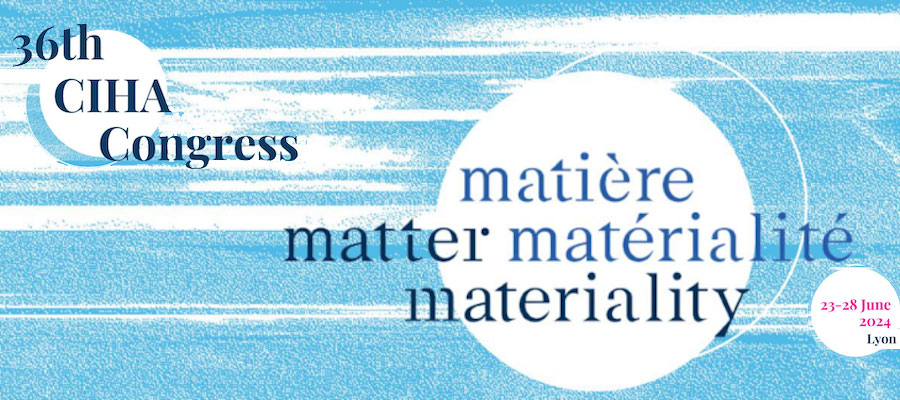Matter in Motion: Transcultural Material and Symbolic Transformations (session CIHA202400201), panel at the 36th Congress of the Comité international d’histoire de l’art (CIHA), Lyon, June 23–28, 2024
Transcultural exchanges increasingly dominate art historical studies investigating objects through their transformational spatial and temporal travels. While matter appears ineffable and fixed, materials nonetheless embody emotions, kinesthetics, memories, histories, resonances, and skills, making interpretations of surface textures as unstable and indeterminate as are the changing contents and meanings of works that cross borders.
Whether embedded in hybrid things produced by combining cross-cultural materials or images linked through encounters or in histories of the changing valuations of an object that crosses cultures, transculturation underscores contingencies of physical matter—e.g., darkening, patinas--and of content re-interpreted and re-inscribed by another cultures’ histories, social orders and ideologies, e.g., French tapestries sent to a Chinese emperor; Ukiyo-e prints, used as packaging in Japan, enjoying aesthetic value in Europe.
Crossing borders through trade, consumption, diplomacy, collecting, exploration, colonialism, and fashion, objects can generate assimilation, appropriation or resistance. Such objects juxtapose distance and presence to highlight how the local engenders mutable physical, symbolic and affective meanings through transcultural dynamics. Studies of the geohistory of art offer methods to analyze cross-cultural perspectives that rewrite materials, contents and formats, revealing that objects have no fixed meanings but undergo continual processes of unmaking/remaking and decontextualizing/recontextualizing.
Transcultural movement occurs across and between Europe, Asia, the Americas, and Africa; panelists are encouraged to explore these many paths of objects in motion everywhere. Suggested topics are:
- Case studies of objects crossing borders, their matter revalued/devalued and their contents and significance re-signified in new localities.
- How objects’ physical and/or symbolic significance in new places or times differs from their material and cultural identities in their original sites or times.
- Whether spatial and temporal crossings affect objects’ representations in the same ways or differently.
- Forces of assimilation or appropriation or resistance, such as nationalism, social identities, markets.
- Ways cross-cultural exchanges affect binaries of centers and peripheries and the dissemination of styles.
- How instabilities of matter and materiality revise art history’s assumptions and methods.
Submissions should be made through the conference website.
Session organizers
Julie Codell, Arizona State University
Sabine du Crest, Université Bordeaux-Montaigne
